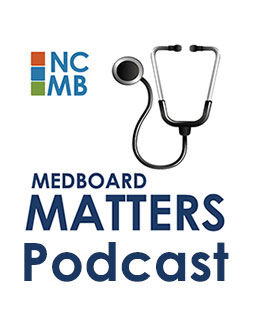Recommendations for X-ray follow-up
Categories: From the Office of the Medical Director Comments: 0 comments Print Friendly Version | Share this item Beginning with this issue of the Forum, the Office of the Medical Director will contribute periodic columns aimed at educating licensees about some common areas of concern. Columns are inspired by actual cases under review by the Board. However, suggested topics are welcome. If you would like to see a specific issue discussed in this space, you may request a topic by emailing the Forum editor at .(JavaScript must be enabled to view this email address)Do keep in mind that the Board cannot give advice on specific cases or situations.
Beginning with this issue of the Forum, the Office of the Medical Director will contribute periodic columns aimed at educating licensees about some common areas of concern. Columns are inspired by actual cases under review by the Board. However, suggested topics are welcome. If you would like to see a specific issue discussed in this space, you may request a topic by emailing the Forum editor at .(JavaScript must be enabled to view this email address)Do keep in mind that the Board cannot give advice on specific cases or situations. In this column, I will discuss problems with follow-up care after X-rays or other diagnostic imaging studies. Both of the cases described below are actual deidentified cases. Both resulted in malpractice payments that meet criteria for posting on the Board’s public website.
Example 1
A 65-year-old female was seen in an emergency department for evaluation of “palpitations.” A chest X-ray was obtained as a matter of routine and read by the Emergency Department physician as “negative.” The radiologist identified a lung mass on the same X-ray and submitted his written report to the ED within hours of its completion. The ED physician’s earlier and inaccurate interpretation of the examination was not available to the radiologist, and there was no documentation the finding of a lung mass by the radiologist was communicated to the ED physician or to the patient. The ED physician did not provide further care for the patient and did not follow-up on the final radiology report. The patient was discharged without an appointment for a CT scan as recommended by the radiologist. Several months later the patient was diagnosed with lung cancer that was ultimately fatal. A malpractice payment of $100,000 was made in the ED physician’s name.
Example 2
A 46-year-old male in overall good health was scheduled for elective hernia repair. Although the patient did not meet criteria for a pre-operative chest X-ray, it was inadvertently included by office staff in the surgeon’s pre-operative orders. The surgeon, not realizing the chest X-ray was done, did not look for the results. The chest X-ray showed an (asymptomatic) atypical lung mass not present on a previous film from five years earlier. The radiology report, with a notation that the mass was suspicious for cancer and needed follow-up, was placed in the patient’s hospital medical record. This finding was not communicated to the surgeon and, by inadvertent neglect, the written report was not seen. Office follow-up records did not include the X-ray report and it did not come to a physician’s attention until six months later, when the chest X-ray report was found in the patient’s hospital chart and follow-up was arranged for what proved to be inoperable cancer. A malpractice payment totalling $750,000 was made in the names of both the surgeon and the radiologist.
Discussion
The Board uses the Accreditation Council for Graduate Medical Education’s “Six Core Competencies” as a framework for evaluating disciplinary and malpractice cases. One of the competencies is “systems-based practice”. What does this mean and how does it apply to the examples above? In short, physicians must demonstrate the ability to effectively and efficiently use resources in the health care system to provide optimal care. In both case examples, systems-process failures resulted in the delayed diagnosis of cancer—currently one of the most active and expensive areas of malpractice.
Physicians have an individual responsibility to appropriately follow-up on diagnostic tests they order, or those that are ordered on their behalf. Physicians have a general responsibility to ensure that they work in an environment that has reliable systems in place that eliminate, to the greatest extent possible, the types of errors noted earlier. Any medical professional who thinks patient safety is compromised by inadequate policies or systems should bring concerns to the attention of administration and work with others to correct the deficiencies, if possible.
Failure to adequately follow-up on X-rays and other diagnostic tests regularly contributes to bad outcomes. Radiologists have a professional responsibility to communicate significant findings—particularly those suggesting cancer—to the ordering or referring physician, and to clearly document that this communication has occurred. The time, method of communication and identification of the person to whom the findings were communicated should be documented. If there is a discrepancy between a preliminary X-ray reading and the final interpretation, this discrepancy should be communicated in a manner that ensures receipt by the referring or treating physicians. Documentation of the discrepancy and its communication to the ordering physician should be included in the final report. The patient’s office medical record should include a copy of the final X-ray report, an indication of physician review of the report and notation of follow-up plans and actions taken, including documentation that the patient was notified of the findings.
Establishing these practices on a routine basis should help prevent errors and improve the quality of care, as well as eliminate numerous claims of malpractice and/or complaints to this Board.
